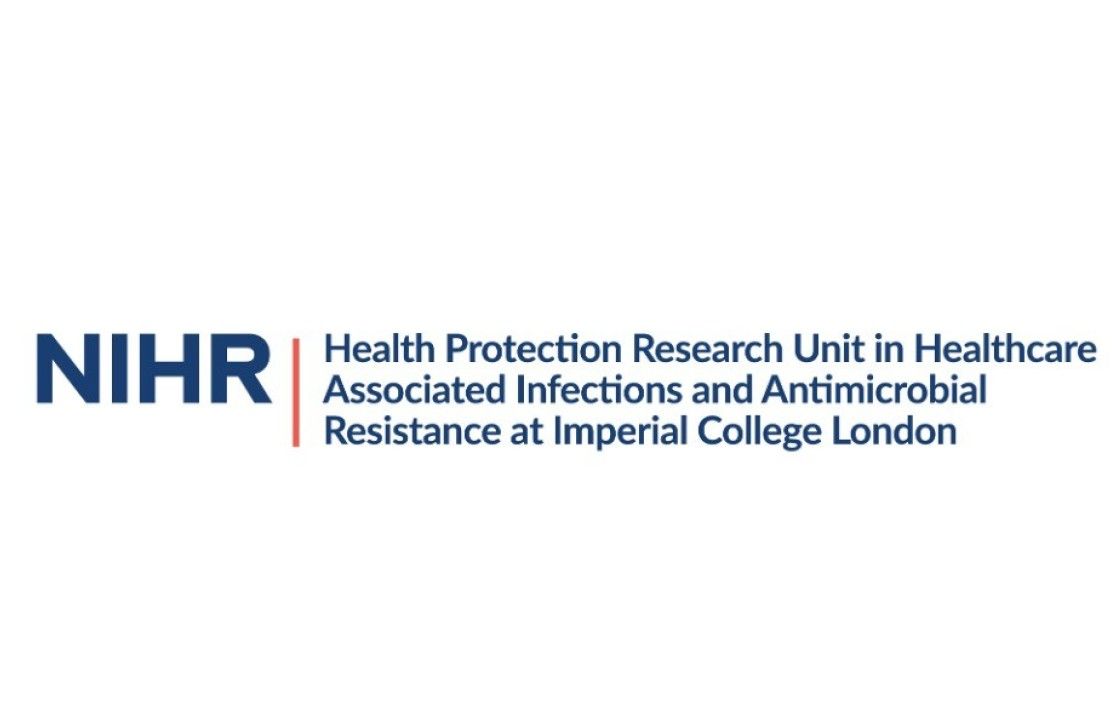Results
- Showing results for:
- Reset all filters
Search results
-
Journal articleRawson T, Ming D, Gowers S, et al., 2019,
Public acceptability of computer-controlled antibiotic management: an exploration of automated dosing and opportunities for implementation
, Journal of Infection, Vol: 78, Pages: 75-86, ISSN: 0163-4453 -
Journal articleChatterjee A, Modarai M, Naylor N, et al., 2018,
Quantifying drivers of antibiotic resistance in humans: a systematic review
, The Lancet Infectious Diseases, Vol: 18, Pages: e368-e378, ISSN: 1473-3099Mitigating the risks of antibiotic resistance requires a horizon scan linking the quality with the quantity of data reported on drivers of antibiotic resistance in humans, arising from the human, animal, and environmental reservoirs. We did a systematic review using a One Health approach to survey the key drivers of antibiotic resistance in humans. Two sets of reviewers selected 565 studies from a total of 2819 titles and abstracts identified in Embase, MEDLINE, and Scopus (2005–18), and the European Centre for Disease Prevention and Control, the US Centers for Disease Control and Prevention, and WHO (One Health data). Study quality was assessed in accordance with Cochrane recommendations. Previous antibiotic exposure, underlying disease, and invasive procedures were the risk factors with most supporting evidence identified from the 88 risk factors retrieved. The odds ratios of antibiotic resistance were primarily reported to be between 2 and 4 for these risk factors when compared with their respective controls or baseline risk groups. Food-related transmission from the animal reservoir and water-related transmission from the environmental reservoir were frequently quantified. Uniformly quantifying relationships between risk factors will help researchers to better understand the process by which antibiotic resistance arises in human infections.
-
Journal articleTroughton R, Birgand G, Johnson AP, et al., 2018,
Mapping national surveillance of surgical site infections (SSIs) to national needs and priorities: an assessment of England’s surveillance landscape
, Journal of Hospital Infection, Vol: 100, Pages: 378-385, ISSN: 0195-6701BackgroundThe rise in antimicrobial resistance has highlighted the importance of surgical site infection (SSI) prevention with effective surveillance strategies playing a key role in improving patient safety. This study maps national needs and priorities for SSI surveillance against current national surveillance activity.MethodsThis study analysed SSI surveillance in NHS hospitals in England covering 23 surgical procedures. Data collected were: (i) annual number of procedures, (ii) SSI rates from national reports, (iii) national reporting requirement (mandatory, voluntary, not offered), (iv) priority ranking from a survey of 84 English NHS hospitals, (v) excess length of stay and costs from the literature. The relationships between estimated SSI burden, national surveillance activity, and hospital-reported priorities were explored with descriptive and univariate analyses.FindingsAmong the 23 surgical categories analysed, top priority ranking by hospitals was associated only with current surveillance (r=0.76, p<0.01) and mandatory reporting (33% vs 8 and 4%, p=0.04). Percentage of hospitals undertaking surveillance, mandatory reporting, and the selection of priorities did not match SSI burden. Large bowel surgery (LBS, voluntary) and caesarean section (not offered) were the two highest contributors of total SSIs per annum, with 39,000 (38%) and 17,000 (16%) respectively, while the four orthopaedic categories (all mandatory) contributed 5,000 (5%). LBS also had the highest associated costs (£119m per annum).ConclusionCurrent surveillance and future priorities were not associated with SSI rate, volume, or cost to hospitals. The two highest contributors of SSIs and related costs have no (caesarean section) or limited (LBS) coverage by national surveillance.
-
Journal articleMizuno S, Iwami M, Kunisawa S, et al., 2018,
Comparison of national strategies to reduce methicillin-resistant Staphylococcus aureus (MRSA) infections in Japan and England
, Journal of Hospital Infection, Vol: 100, Pages: 280-298, ISSN: 0195-6701BackgroundNational responses to healthcare-associated infections vary between high-income countries but when analysed for contextual comparability, interventions can be assessed for transferability.AimTo identify learning from country-level approaches to addressing meticillin-resistant Staphylococcus aureus (MRSA) in Japan and England.MethodsA longitudinal analysis (2000-17), comparing epidemiological trends and policy interventions. Data from 441 textual sources concerning infection prevention and control (IPC), surveillance, and antimicrobial stewardship interventions were systematically coded for: type - mandatory requirements, recommendations, or national campaigns; method - restrictive, persuasive, structural in nature; level of implementation - macro (national), meso (organisational), micro (individual) levels. Healthcare organisational structures and role of media were also assessed.FindingsIn England significant reduction has been achieved in number of reported MRSA bloodstream infections. In Japan, in spite of reductions, MRSA remains a predominant infection. Both countries face new threats in the emergence of drug-resistant Escherichia coli. England has focused on national mandatory and structural interventions, supported by a combination of outcomes-based incentives and punitive mechanisms, and multidisciplinary IPC hospital teams. Japan has focused on (non-mandatory) recommendations and primarily persuasive interventions, supported by process-based incentives, with voluntary surveillance. Areas for development in Japan include resourcing of dedicated data management support and implementation of national campaigns for healthcare professionals and the public.ConclusionPolicy interventions need to be relevant to local epidemiological trends, while acceptable within health system cultures and public expectations. Cross-national learning can help inform the right mix of interventions to create sustainable and resilient systems for future infection and econom
-
Journal articleParks T, Wilson C, Curtis N, et al., 2018,
Polyspecific intravenous immunoglobulin in clindamycin-treated patients with streptococcal toxic shock syndrome: a systematic review and meta-analysis.
, Clinical Infectious Diseases, Vol: 67, Pages: 1434-1436, ISSN: 1058-4838We evaluated the effect of adjunctive intravenous immunoglobulin (IVIG) on mortality in clindamycin-treated streptococcal toxic shock syndrome patients using a meta-analysis. In association with IVIG, mortality fell from 33.7% to 15.7% (risk ratio 0.46, 95% confidence intervals 0.26-0.83, p=0.010) with remarkable consistency across the single randomised and four non-randomised studies.
-
Journal articleAlsaidan J, Portlock J, Aljadhey HS, et al., 2018,
Systematic review of the safety of medication use in inpatient, outpatient and primary care settings in the Gulf Cooperation Council countries
, SAUDI PHARMACEUTICAL JOURNAL, Vol: 26, Pages: 977-1011, ISSN: 1319-0164- Author Web Link
- Cite
- Citations: 12
-
Journal articleBlanco-Mavillard I, Rodriguez-Calero MA, Castro Sanchez EM, et al., 2018,
Appraising the quality standard underpinning international clinical practice guidelines for the selection and care of vascular access devices: a systematic review of reviews
, BMJ Open, Vol: 8, ISSN: 2044-6055Objective Catheter-related bloodstream infections are one of the most important adverse events for patients. Evidence-based practice embraces interventions to prevent and reduce catheter-related bloodstream infections in patients. At present, a growing number of guidelines exist worldwide. The purpose of the study was to assess clinical practice guidelines for peripheral and central venous access device care and prevention of related complications.Design Systematic review of clinical practice guidelines: We conducted a search of the literature published from 2005 to 2018 using Medline/PubMed, Embase, CINAHL, Ovid, ScienceDirect, Scopus and Web of Science. We also evaluated grey literature sources and websites of organisations that compiled or produced guidelines. Guideline quality was assessed with the Appraisal of Guidelines for Research and Evaluation, Second Edition tool by three independent reviewers. Cohen’s kappa coefficient was used to evaluate the concordance between reviewers.Results We included seven guidelines in the evaluation. The concordance between observers was substantial, K=0.6364 (95% CI 0.0247 to 1.2259). We identified seven international guidelines, which scored poorly on crucial domains such as applicability (medium 39%), stakeholder involvement (medium 65%) and methodological rigour (medium 67%). Guidelines by Spanish Health Ministry and UK National Institute for Health and Care Excellence presented the highest quality.Conclusions It is crucial to critically evaluate the validity and reliability of clinical practice guidelines so the best, most context-specific document is selected. Such choice is a necessary prior step to encourage and support health organisations to transfer research results to clinical practice. The gaps identified in our study may explain the suboptimal clinical impact of guidelines. Such low adoption may be mitigated with the use of implementation guides accompanying clinical documents.
-
Journal articleCabellos-Garcia AC, Martinez-Sabater A, Castro Sanchez EM, et al., 2018,
Relation between health literacy, self-care and adherence to treatment with oral anticoagulants in adults: a narrative systematic review
, BMC Public Health, Vol: 18, ISSN: 1471-2458BackgroundOral anticoagulants (OAC) are widely used in patients with cardiovascular diseases. However, for optimal OAC self-care patients must have skills, among which health literacy (HL) is highlighted. We aimed to describe the relation between HL and self-care in cardiovascular patients on OAC treatment.MethodsElectronic searches were carried out in the PubMed, Scopus, Embase, CINAHL, Web of Science, Cochrane Library, SciELO, IME-Biomedicina, CUIDEN Plus and LILACS databases, limited to Spanish and English language and between January 2000–December 2016. Papers reported on adults older than 18 years, taking OAC by themselves for at least three months. PRISMA guidelines were used for paper selection.ResultsWe identified 142 articles and finally included 10; almost all of them about warfarin. Our results suggest that in patients taking OAC treatments there is a positive relationship between HL and the level of knowledge. In addition, a small percentage of participants on the selected papers recognized the side effects and complications associated with OAC treatment. Lower HL level was associated with greater knowledge deficits and less adherence to treatment.ConclusionThere is a paucity of research evaluating the effect of HL on diverse aspects of OAC treatments. There is a need to expand the evidence base regarding appropriate HL screening tools, determinants of adequate knowledge and optimal behaviours related to OAC self-management.
-
Journal articleHerrero P, Rawson TM, Philip A, et al., 2018,
Closed-loop control for precision antimicrobial delivery: an In silico proof-of-concept
, IEEE Transactions on Biomedical Engineering, Vol: 65, Pages: 2231-2236, ISSN: 0018-9294IEEE Objective: Inappropriate dosing of patients with antibiotics is a driver of antimicrobial resistance, toxicity, and poor outcomes of therapy. In this paper, we investigate, in silico, the hypothesis that the use of a closed-loop control system could improve the attainment of pharmacokinetic-pharmacodynamic targets for antimicrobial therapy, where wide variations in target attainment have been reported. This includes patients in critical care, patients with renal disease and patients with obesity.
-
Journal articleAylin PP, Bou-Antoun S, Costelloe CE, et al., 2018,
Age-related decline in antibiotic prescribing for uncomplicated respiratory tract infections in primary care in England following the introduction of a national financial incentive (the Quality Premium) for health commissioners to reduce use of antibiotics in the community: an interrupted time series analysis
, Journal of Antimicrobial Chemotherapy, Vol: 73, Pages: 2883-2892, ISSN: 0305-7453Objectives: To assess the impact of the 2015/16 NHS England Quality Premium (which provided a financial incentive for Clinical Commissioning Groups to reduce antibiotic prescribing in primary care) on antibiotic prescribing by General Practitioners (GPs) for respiratory tract infections (RTIs).Method: Interrupted time series analysis using monthly patient-level consultation and prescribing data obtained from the Clinical Practice Research Datalink (CPRD), between April 2011 and March 2017. The study population comprised patients consulting a GP who were diagnosed with an RTI. We assessed the rate of antibiotic prescribing in patients (both aggregate and stratified by age) with a recorded diagnosis of uncomplicated RTI, before and after the implementation of the Quality Premium.Results: Prescribing rates decreased over the six year study period, with evident seasonality. Notably, there was a 3% drop in the rate of antibiotic prescribing (equating to 14.65 prescriptions per 1,000 RTI consultations) (p<0.05) in April 2015, coinciding with the introduction of the Quality Premium. This reduction was sustained, such that after two years there was a 3% decrease in prescribing relative to that expected had the pre-intervention trend continued. There was also a concurrent 2% relative reduction in the rate of broad-spectrum antibiotic prescribing. Antibiotic prescribing for RTIs diagnosed in children showed the greatest decline with a 6% relative change two years after the intervention. Of the RTI indications studied, the greatest reductions in antibiotic prescribing were seen for patients with sore throats.Conclusions: Community prescribing of antibiotics for RTIs significantly decreased following the introduction of the Quality Premium, with the greatest reduction seen in younger patients.
This data is extracted from the Web of Science and reproduced under a licence from Thomson Reuters. You may not copy or re-distribute this data in whole or in part without the written consent of the Science business of Thomson Reuters.

